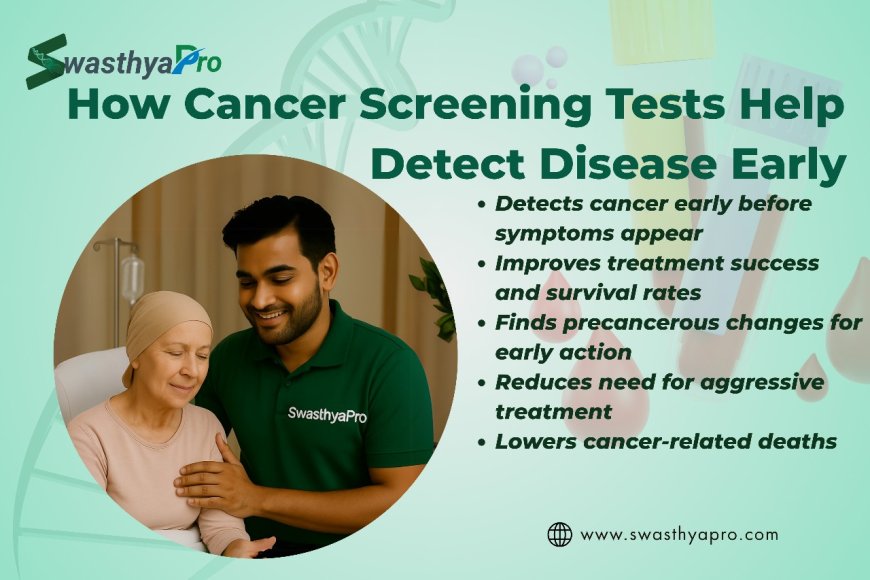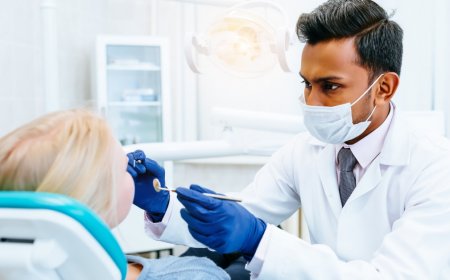The Science Behind a Cancer Screening Test: How It Detects Early Trouble

We often hear how vital a cancer screening test is but few understand the science that powers it. How can a test spot something so deadly before symptoms arise? The answer lies in decades of research, biological understanding, and early detection technology.
In this article, well explore how a cancer screening test works beneath the surface from cell mutation to detection. Knowing whats going on behind the scenes can help remove fear and add confidence to your health decisions.
1. What is a Cancer Screening Test, Really?
A cancer screening test is not meant to diagnose cancer its meant to look for signs of it before you even feel sick. It detects changes in tissues, cells, blood markers, or imaging patterns that suggest cancer might be forming.
These early changes include:
-
Abnormal or precancerous cells
-
Unusual protein levels
-
Genetic mutations
-
Tumor markers in the blood
-
Structural abnormalities on scans
If caught early, many cancers can be treated before they ever become life-threatening. This is the foundation of all cancer screening test science: early is everything.
2. Cellular Abnormalities: Spotting the Seeds of Cancer
Cancers begin when normal cells mutate and grow out of control. These mutations usually start silently with no pain, no lump, no visible symptom.
A cancer screening test like a Pap smear scrapes cells from the cervix to detect these subtle changes. Scientists use microscopes and lab tools to check if the cells:
-
Appear abnormally shaped
-
Are growing too fast
-
Show signs of HPV or precancer
This microscopic view gives doctors insight before cancer takes root. The same principle applies to other tests like skin biopsies or oral tissue swabs.
3. Blood Markers: Chemistry That Speaks
Some cancers shed proteins or enzymes into the bloodstream. These are called tumor markers. A cancer screening test like the PSA test for prostate cancer measures levels of Prostate-Specific Antigen in the blood.
Other examples of tumor markers include:
-
CA-125 for ovarian cancer
-
AFP (Alpha-fetoprotein) for liver cancer
-
CEA (Carcinoembryonic antigen) for colon and lung cancers
These markers dont confirm cancer but rising levels may prompt further testing, acting as a red flag your doctor wont ignore.
4. Imaging: Seeing the Unseen
A cancer screening test like a mammogram or low-dose CT scan creates images of internal body parts to detect structural abnormalities.
Heres how the science works:
-
Mammograms use X-rays to detect tiny lumps, calcifications, or distortions in breast tissue.
-
CT scans use rotating X-rays and computer processing to create cross-section images of lungs, liver, or other organs.
The technology is so precise, it can find tumors the size of a grain of rice. This allows treatment before the cancer spreads or worsens.
5. DNA-Based Tests: Genetics Never Lie
Modern cancer screening tests are evolving to include genomic testing. These look for mutations in your DNA or in viruses (like HPV) that increase your risk of cancer.
Examples include:
-
BRCA1/BRCA2 gene testing for breast and ovarian cancer
-
HPV testing for cervical and throat cancers
-
FIT-DNA tests for colon cancer, analyzing stool for DNA changes
These tests are powerful because they predict risk even before cancer starts forming. Its science guiding your prevention journey.
6. AI and Machine Learning: The Future of Screening
Some hospitals and labs now use AI-powered systems to assist in interpreting cancer screening tests. Algorithms can:
-
Detect subtle patterns radiologists may miss
-
Analyze thousands of images in seconds
-
Predict cancer likelihood with increasing accuracy
The future of cancer screening lies in intelligent automation, making tests faster, more accurate, and more widely available.
7. What Happens After a Positive Test?
If a cancer screening test shows a concern, doctors will order:
-
Diagnostic tests like biopsies or MRIs
-
Specialist referrals for oncologists
-
Additional lab work to confirm or rule out cancer
Remember, a positive screening test doesnt always mean you have cancer but it demands action.
Final Thoughts
Behind every cancer screening test is a world of precise science and powerful technology designed to protect you. These tests dont guess they measure, compare, and flag abnormalities before danger erupts.
? Understand how the test works
? Trust the data behind early detection
? Use the science for your protection, not fear
Because when it comes to cancer, knowledge isnt just power its prevention. And a cancer screening test is your first step toward both.


































